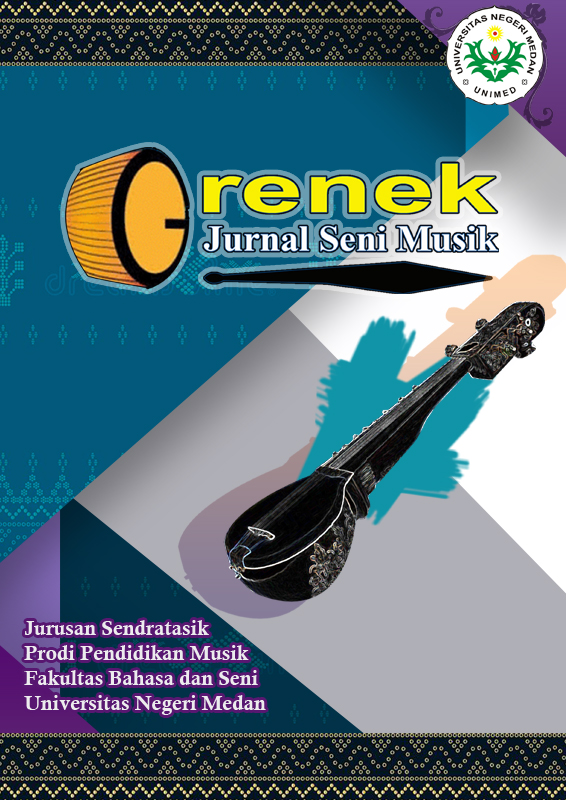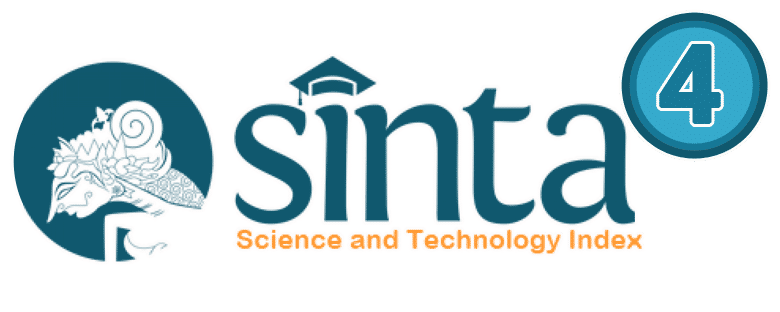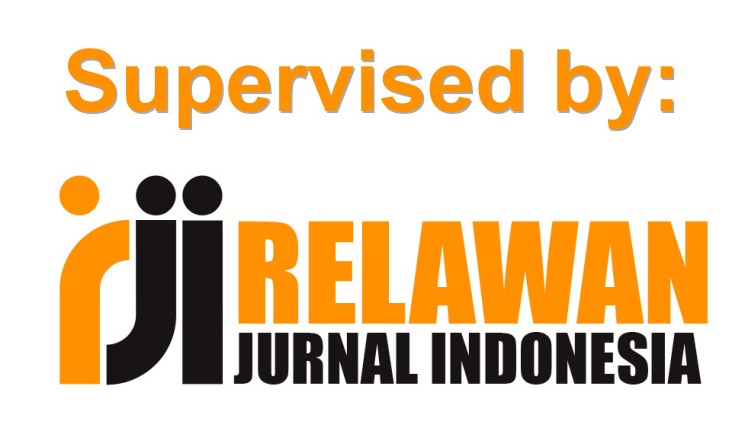The Technique of Bebano Drums on Accompanying Jogi Dance in Wansendari Art Studio Batam City
DOI:
https://doi.org/10.24114/grenek.v10i2.27615Keywords:
Bebano, Jogi Dance, Batam CityAbstract
The purpose of this study is: To find out how the technique of playing Gendang Bebano in accompanying the jogi dance in the wansendari art studio. The approach and type of research used by the researcher is descriptive qualitative. This research was conducted at the Wansendari Art Studio, Batam City, so the population of this study were all members of the Wansendari Art Studio. While the samples of this study were members of the studio musicians, the head of the studio, the instructor of the studio as well as the head of culture in the city of Batam. The writing uses data collection techniques in the form of: observation to produce valid data regarding the technique of playing the Gendang Bebano in accompanying the jogi dance. Interview to get the results of research on the technique of playing Gendang Bebano in accompanying the jogi dance. Documentation for additional data in the form of photos, recordings and videos. The results of this study prove that the technique of playing the Gendang Bebano in the form of the body position of the drummers is sitting cross-legged and the drums are above the players' feet The Bebano of the drum is held by both players' hands and produces the sound of tak, pung, plang, tung. On the sound without using the index finger, middle finger, third finger, and little fingers, they are hit on the edge of the drum skin. The sound of pung uses the index finger, middle finger, third finger, and little finger but is hit in the middle area of the drum with the fingers in a straight position with the palm of the hand attached to the edge of the drum. In the plaang sound, the middle finger, third finger, and little finger are beaten on the edge of the drum but the palms are attached to the circumference of the drum. For the tung sound, use 4 straight fingers and hit in the middle of the drum.References
Banoe, Pono. 2013. Kamus Musik. Yogyakarta: Kanisinus
Cooper, John Michael. 2018. Performance Practice Review. E-Journal The
Cambridge Companion to Percussion Vol. 22: No. 1. ISSN : 2166-8205.
Lameira, Adriano dan Shumaker, Robert. 2019. Orangutans show active voicing through a membranophone. E-Journal Nature Scientific Report 9, 12289 (2019), ISSN: 2045-2322.
Mulyana, Dedy. 2018. Metodologi Penelitian Kualitatif Paradigma Baru Ilmu Komunikasi dan Ilmu Sosial Lainnya. Bandung: Rosda.
Ohlendorf, Daniella. 2018. Influence of ergonomic layout musician chair on posture and seat pressure in musicians of different playing level. Jurnal Plos One. ISSN: 1932-6203.
Renaldus. 2019. The Function of Timorese Gong Music in The Tfua Ton Ritual Ceremony in Napan Kefamenanu Village. Catharsis: Journal of Arts
Education Universitas Negeri Semarang, Vol 8 No. 2 (2019). ISSN: 2502-
Soeharto, M. 1992. Kamus Musik. Jakarta: Gramedia Widia sarana Indonesia.
Soekarno, Ari 2000. Buku Pintar Musik. Jakarta: Inovasi.
Sudhir Kumar. 2015 .Art-Research In Memory Institutions: A Brief Review Of Their Resources From Visual-Arts-Research Perspective International
Journal of Research “ Granthaalayah, Vol. 3 No. 10 (2015): 84-99. ISSN:
-3629.
Sugiyono.2018. Metode Penelitian Kuantitatif, Kualitatif dan R&D. Bandung: PT Alfabet.
Suroso, Panji. 2012. Ketoprak dor di Helvetia. Medan: Unimed Press.
Suroso, Panji. 2019. Dasar-dasar analisis musik. Medan: CV.Kencana Mas
Sejahtera.
Suroso, Panji. 2020. Percussion for beginner. Medan: CV Kencana Mas
Sejahtera.
Surya, D. E. dan Sumarno, L. 2012. Pengenalan Nada Pianika Menggunakan
Jendela Kaiser, FFT, dan Korelasi. Prosiding Seminar Nasional Rekayasa
Teknologi Industri dan Informasi (RETII). Yogyakarta: Sekolah Tinggi Teknologi Nasional.
Downloads
Published
Issue
Section
License
Copyright (c) 2021 Rhema Faith, Panji Suroso

This work is licensed under a Creative Commons Attribution-ShareAlike 4.0 International License.
Authors published with the Grenek: Jurnal Seni Musik agree to the following terms:
- Authors retain copyright and grant the journal the right of first publication with the work simultaneously licensed under a Creative Commons Attribution License (CC BY-SA 4.0) that allows others to share the work with an acknowledgment of the work's authorship and initial publication in this journal.
- Authors are able to enter into separate, additional contractual arrangements for the non-exclusive distribution of the journal's published version of the work (e.g., post it to an institutional repository or publish it in a book), with an acknowledgment of its initial publication in this journal.
- Authors are permitted and encouraged to post their work online (e.g., in institutional repositories or on their website) prior to and during the submission process, as it can lead to productive exchanges, as well as earlier and greater citation of published work. (See The Effect of Open Access)








